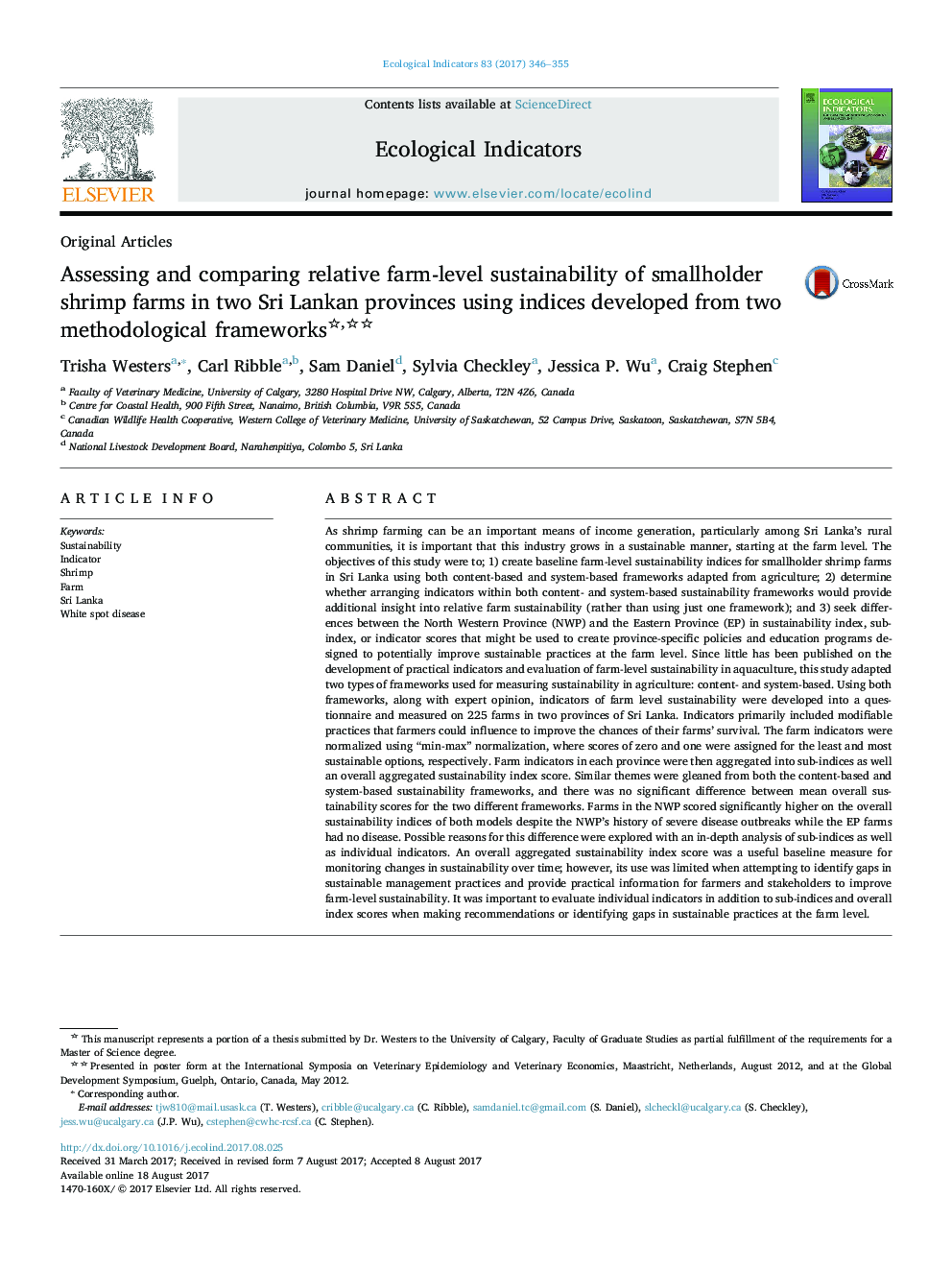| Article ID | Journal | Published Year | Pages | File Type |
|---|---|---|---|---|
| 5741505 | Ecological Indicators | 2017 | 10 Pages |
â¢Sustainability indices were created for shrimp farms in two provinces in Sri Lanka.â¢The type of framework used (systems or content-based) did not affect the index score.â¢Significant differences in sustainability scores were found between the two provinces.â¢The use of an overall score was limited in identifying gaps in management practices.
As shrimp farming can be an important means of income generation, particularly among Sri Lanka's rural communities, it is important that this industry grows in a sustainable manner, starting at the farm level. The objectives of this study were to; 1) create baseline farm-level sustainability indices for smallholder shrimp farms in Sri Lanka using both content-based and system-based frameworks adapted from agriculture; 2) determine whether arranging indicators within both content- and system-based sustainability frameworks would provide additional insight into relative farm sustainability (rather than using just one framework); and 3) seek differences between the North Western Province (NWP) and the Eastern Province (EP) in sustainability index, sub-index, or indicator scores that might be used to create province-specific policies and education programs designed to potentially improve sustainable practices at the farm level. Since little has been published on the development of practical indicators and evaluation of farm-level sustainability in aquaculture, this study adapted two types of frameworks used for measuring sustainability in agriculture: content- and system-based. Using both frameworks, along with expert opinion, indicators of farm level sustainability were developed into a questionnaire and measured on 225 farms in two provinces of Sri Lanka. Indicators primarily included modifiable practices that farmers could influence to improve the chances of their farms' survival. The farm indicators were normalized using “min-max” normalization, where scores of zero and one were assigned for the least and most sustainable options, respectively. Farm indicators in each province were then aggregated into sub-indices as well an overall aggregated sustainability index score. Similar themes were gleaned from both the content-based and system-based sustainability frameworks, and there was no significant difference between mean overall sustainability scores for the two different frameworks. Farms in the NWP scored significantly higher on the overall sustainability indices of both models despite the NWP's history of severe disease outbreaks while the EP farms had no disease. Possible reasons for this difference were explored with an in-depth analysis of sub-indices as well as individual indicators. An overall aggregated sustainability index score was a useful baseline measure for monitoring changes in sustainability over time; however, its use was limited when attempting to identify gaps in sustainable management practices and provide practical information for farmers and stakeholders to improve farm-level sustainability. It was important to evaluate individual indicators in addition to sub-indices and overall index scores when making recommendations or identifying gaps in sustainable practices at the farm level.
